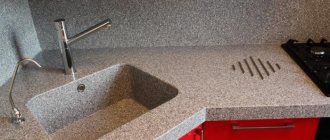Timely service is the key to the longevity of the smoking pipe and a guarantee of comfortable smoking. Professionals recommend performing maintenance daily. Before cleaning your smoking pipe, the main thing is to prepare the appropriate equipment, which is easy to find in any tobacco store.
Caring for your smoking pipe involves:
- Cleaners. This is a special tool with a fuzzy tip. The brush helps to penetrate inside the bowl and the smoke channel in the chibuk and remove the remaining tobacco mixture.
- Ashtray. Separate accessories with a cork center are made for pipes. The plug will be needed to shake out combustion residues. If you hit the device on the end surface, sooner or later the bowl will crack or the ashtray itself will crack.
You can make an ashtray with your own hands. A standard cigarette model with a wide platform inside is suitable for this. Caps used to seal wine bottles can be used as corks. The cork is fixed to the product using superglue.
Anyone who knows how to properly clean a pipe knows that it is better to do this in the evening. Overnight the product will stand and be free of foreign odors.
Failure to clean it will clog the internal ducts and make smoking significantly worse.
Cleaning a smoking pipe is divided into the following stages:
- First, the bowl is freed from combustion products and ash. This can be done by lightly hitting the cork insert. You shouldn’t hit it too hard so as not to damage the integrity of the product. Before cleaning smoking pipes, professionals check the integrity of the accessories.
- Next, the mouthpiece is separated from the shank. This should be done carefully and accurately. You cannot pull out the mouthpiece: this can lead to distortion and deformation of the base of the tube. The mouthpiece can be changed, but the stem cannot.
- To avoid breaking the device, it should be cooled down. The heating temperature of acrylic and ebonite (the most common raw material for the production of mouthpieces) and briar is different. Acrylic expands at high temperatures: if the material cools down, you can get the drip tip without any problems. Important: the mouthpiece must be screwed in and out only clockwise, otherwise the neck seat will become loose.
- When the chibouk is released, a brush is carefully inserted into the smoke channel. The best option is a brush with soft and hard hairs. This will help free the channel from old ash and combustion residues.
- The next stage is processing the outer surface. This is easy to do with a regular napkin. The use of formulations containing alcohol is not allowed. This will cause deformation of the briar and any other material, and also create a potential danger for the smoker.
Before cleaning smoking pipes, you need to know that it is not recommended to use used pipe cleaners. The accessories are cheap and designed for one-time use. The inside of the chubuk is cleaned with progressive and reciprocating movements (similar to a piston in an engine cylinder). This will help capture more dirt and clear the channel faster.
Ebonite mouthpieces deserve special attention. Over time, the coating loses its factory characteristics. You can protect an ebonite drip tip with special pastes or so-called guitar oil.
Symptoms of the smoking process
Before we go further and completely change the topic of discussion from pipe smoking to pipe care, let's discuss a few situations that often accompany new pipe smokers. We’ll also talk about the reasons that can cause such situations.
7.1 The smoking pipe bubbles and moisture accumulates in it
This situation often occurs when smoking inexpensive pipes in which not enough attention has been paid to engineering. In places where the mating parts are not very carefully fitted, where a step is formed, moisture accumulates. It begins to bubble while smoking. Another possible condition for the manifestation of such a situation could be smoking too quickly and too hotly. It is also not uncommon for this to happen when smoking tobacco that is too moist. Certain weather conditions may also cause excess moisture to form in the handset. If such a situation arises, then simply insert the pipe brush carefully into the tube from the side of the mouthpiece and, after carefully blotting it, simply pull it out. You can get rid of this disease by finding out the cause. Most often, for beginners, this is caused by smoking too quickly. Try to slow down the pace and the problem, if it doesn’t go away completely, will noticeably decrease.
7.2 Burning tongue when smoking a pipe
This is also a very common problem among beginning pipe smokers. And in the same way, this problem can have several sources. The first reason is too fast, and therefore hot, smoking. Rapid smoking also increases the amount of water vapor in the smoke of smoldering tobacco, which itself has an elevated temperature. This leads to a tongue burn. Some types of flavorings used to flavor tobacco can cause a tingling sensation on the tongue. The flavors are introduced into the tobacco mixture through the Burley tobacco variety, which itself is a bit tongue-tingling. In itself, the sensations from smoking such tobacco mixtures may not go beyond comfortable smoking, but in combination with hot smoking, this can cause very unpleasant sensations on the tongue. The advice in this case will not be original - reduce the rate of smoking. If, after reducing the tempo, the discomfort decreases but remains, try changing the tobacco to a blend with less flavor and/or burley.
7.3 The pipe became sour/bitter and smoking was no longer enjoyable
This may be caused by not paying enough attention to cleaning the tube and/or using it too often. I'll talk a little about this below when we move on to cleaning pipes and maintenance issues.
What to do if your mouthpiece comes loose
Another point worth mentioning concerns the situation when there are defects in the connection between the mouthpiece and the shank. There are two ways to solve this problem at home.
If the connection is loose, then the neck of the mouthpiece is heated from a flame or in boiling water. When it becomes soft, you need to press it vertically against any hard object and hold it until it cools down. From all this, the diameter of the neck of the mouthpiece becomes larger. You can carry out the procedure until the desired planting density is achieved, and to prevent the smoke channel from narrowing too much, a wire is simply inserted into it.
If the connection is very tight and the mouthpiece is pulled out with great difficulty, then its neck is rubbed with graphite powder. If it is difficult to buy a special one, then you can crumble the lead of a simple pencil. You just need to take one marked “soft”. If this does not help, then you can try to warm up the neck of the mouthpiece and immediately screw it into the shank, thus achieving the desired tightness of the connection.
https://zavisimosty.ru
Today, according to WHO, there are about one and a half billion smokers on the planet. The most tobacco-dependent country is Cuba. But Russia is also “trying”, ranking seventh in the world in terms of the number of cigarettes smoked per capita. 58% of Russian men and 12% of women are smokers, and the number of tobacco fans increases every year in Russia by one and a half percent.
Without touching on the saddest statistics, we have to admit that smoking has a number of unattractive consequences:
- darkened teeth and plaque on them;
- sourish heavy odor from the mouth and hair;
- a peculiar smell of sweat that is unpleasant for others;
- tobacco yellowed fingertips;
- damaging effect on blood vessels and heart muscle;
- lung and larynx cancer.
Much has been said about this. But in fairness, it is necessary to highlight the positive aspects recorded in the special medical literature:
- nicotine has a positive effect on the intestinal mucosa, so ulcerative colitis is 2 times less likely to occur in smokers than in non-smokers;
- Women who smoke are less likely to develop endometrial cancer;
- smoking, albeit for a short time, improves memory and reaction speed;
- Smoking reduces the risk of Alzheimer's and Parkinson's diseases - however, this statement is still controversial.
Smoking pipe care
Well, all good things must come to an end and when your pipe is finished, you can finally relax and take a break. But it’s too early to forget about the pipe - just like you, pipes need rest. And the tube can only rest if it is clean.
8.1. Cleaning the tubes
Theoretical aspects of cleaning
Burnt pipe tobacco itself and most of its combustion products can hardly be called at least somewhat aromatic. Moreover, most often they cause persistent rejection and the desire of the olfactory organs to quickly slam shut, pretending to be a pearl shell. And even the most noble pipe tobacco leaves behind residues of resins and oils that are not at all noble in terms of aroma. If you don't want your pipe to resemble an ashtray either in taste or aroma, keep it clean. Despite its density, briar readily absorbs moisture, and with it aromatic components - both pleasant and not so pleasant. This is why the pipe needs to be cleaned after every smoking. This may seem like some kind of chore, but there is nothing burdensome about the cleaning process and it will take you no more than 5 minutes per tube. The first thing I will draw your attention to is that you should not clean your pipe immediately after smoking. More precisely, a hot tube should not be disassembled, since the materials expand when heated and when disassembling the tube, the mouthpiece pin may jam, which, with excessive force, can lead to its breakage. Uneven cooling of the shank and mouthpiece can also lead to the fact that after cooling the mouthpiece will be difficult to insert or vice versa - it will dangle in the mortise. The optimal time to start cleaning your pipe is 20-30 minutes after smoking, during which time the pipe will have time to cool down and can be disassembled without fear of breaking the mouthpiece. Of course, you remember this, but just in case, I will still mention once again that you need to disassemble the smoking pipe by unscrewing the mouthpiece clockwise. This is due to the fact that after drilling the briar, the fibers in the briar are laid in this direction by the drill and twisting “against the grain” can raise these fibers.
Aesthetic aspects of pipe cleaning
Spending five minutes cleaning the tube after 20-30 minutes of cooling is not a problem when you have that time. What to do when he is not there? Don’t rush to the pipe you smoked on the way to work in the middle of your morning meeting. Don’t ruin an important deal just because the tube has cooled enough to disassemble it. There is no need to disrupt your plans to clean the pipe, because 20-30 minutes is the minimum, but not the maximum. The smoked pipe can easily wait until you do its business, but before leaving the pipe to cool, you should shake out the remaining ash and tobacco in order to weaken the source of the unpleasant aroma. Usually, if I don’t manage to smoke the pipe to the end, I use an awl or the spoon of a tee to lift the remaining tobacco at the bottom so that the ash covers the bottom, and then I shake it all out into the ashtray. I don’t knock it out, but I pour it out. The ash covering the bottom will collect some of the released moisture and will not allow it to penetrate into the soot layer and into the briar. If the pipe is completely smoked, I just lightly stir the ashes at the bottom and pour them into the ashtray.
Continuing the theme of aroma, I would like to note that you should not clean your pipes in public. During this process, the aroma spreads quite widely and not everyone present will be able to understand the “side effects” of your hobby. Moreover, you should not start cleaning if you are in the company of colleagues or friends at the holiday table. Just unwrapping a “surgical kit” to clean your tubes can get you a lot of weird looks, not to mention the cleaning process itself.
A smoked pipe can easily wait for a few hours for the moment when you can give it the attention it deserves in complete peace. Regular and thorough cleaning, as well as adequate rest time for the tube, will compensate for short cleaning delays. And if I don’t have the opportunity to clean my pipes during the day, I collect the pipes I smoked during the day and in the evening, in peace and quiet, smoking my pipe, I begin general cleaning.
Practical advice
There is nothing complicated or at all burdensome about cleaning smoking pipes. Don’t look at this as a duty or inevitable retribution for previous pleasures - it’s just a simple planned process, nothing more. In order to get started, we will need an ashtray, pipe cleaners, a tee or pipe knife, a napkin and, in fact, a smoked pipe. Sometimes a literal drop of cognac is added to this set at the bottom of the glass.
8.2 Internal cleaning
First, we disassemble the cooled tube by unscrewing the mouthpiece clockwise and carefully remove the carbon filter, if any, from the filter chamber. I start cleaning from the mouthpiece, inserting the brush so that it goes right through. When passing the brush through the mouthpiece, make sure that the sharp wire ends do not scratch the smoke. mouthpiece channel from the inside, which is especially important for curved mouthpieces. Next, I simply “roll” the mouthpiece on the brush with relatively fast movements with a short amplitude, rotating it slowly around its axis. Special attention should be paid to cleaning the filter chamber and the mouthpiece in the mouthpiece. The mouthpiece is cleaned in just a few movements and there is no need to “roll” it on a brush until a burning smell appears.
With the same brush I begin to clean the chibouk, inserting the narrow end of the brush into it. Swiping quite slowly and rotating, I bring the brush to the center of the tobacco chamber. With the first pass, I collect moisture that may have accumulated in the chibouk and ash particles that have flown into it. Then I take out the brush and, inserting it with the opposite end, begin cleaning with short movements “back and forth”, rotating the brush clockwise. You should not make the amplitude of translational movements too large and pay attention to the fact that the end of the brush that goes into the tobacco chamber does not scratch the bottom and does not hit the smoke opposite to the exit. channel wall of the bowl. The purpose of this passage is to remove the main dirt from the walls of the pipe, and therefore there is no point in working with a brush for a long time, otherwise we will begin to smear the dirt collected on the brush back.
Having pulled the brush out of the pipe, we will see that it does not look as cheerful as before - at both ends it is noticeably dirty and wet, but in the center the brush is still quite clean and usable. We fold it into a U-shape with a rounding diameter equal to the diameter of the tobacco chamber. We insert the smoothly folded brush into the tobacco chamber and with little effort, with short translational movements, we go over the entire surface of the tobacco chamber, first with one beam of the folded brush, then with the other. Don’t forget to also clean the bottom of the tobacco chamber. Having collected the ash and adhering tobacco crumbs from the walls, we take out the brush and fold it “inside out” with the clean edge facing out. Before continuing to clean the chamber, take a spoon from a tee or a pipe knife and, with very little effort, use it to clean off the adhering particles of tobacco from the walls of the tobacco chamber that could not be removed with a brush. Having poured out the tobacco and ash crumbs collected in the bowl, we continue cleaning the chamber with a brush. After several passes along the walls of the tobacco chamber, we pick up a lint-free napkin and throw the dirty brush into the ashtray or trash. We wrap the napkin around the finger so that it enters the tobacco chamber. Without much effort, we clean the tobacco chamber clean and blow out the bowl in order to remove any possible lint from the walls. It’s possible that some people won’t like what I say next, but often after using a napkin, and sometimes instead of it, I just go over the camera with my finger, and you can press hard, but not to the point of blistering, without fear of rubbing the lint according to the bowl. Despite the lack of any aesthetics in such a passage, control cleaning with a finger is usually the highest quality. Nothing prevents you from simply rinsing your hands with soap after everything. However, whether you follow this cleaning method or laugh at it is your choice.
Now we take a clean brush in our hands and do a test cleaning along the mouthpiece channel and the bell of the mouthpiece. After this, fold the ruff in half and press the bend tightly so that both rays of the ruff fit snugly against each other. Using a brush from the side of the fold, we go through the filter chamber, cleaning it, and in the same way we clean the mortise in the pipe, turning the brush inside out if necessary. After this, using a double-folded brush, we begin cleaning the chibouk. We introduce the brush slowly so that the possible “ear” at the bend does not scratch the smoke. channel from the inside. We bring one end into the bowl and use “back and forth” movements to clean the pipe so that the “ear” of the folded brush does not dive out of the bowl into the smoke. channel and did not scratch it. This is how we clean the chibouk, rotating the brush during translational movements and around its axis. After a while, turn the brush over and insert it with the other end, continuing cleaning. After this, we “turn out” the brush and repeat the procedure on both ends. If there are still traces of dirt on the brush, then take a clean brush and repeat cleaning the pipe until the brush comes out clean. You shouldn’t skimp on brushes, especially since 2-3 pieces are enough to clean one tube.
Occasionally I clean the smoke channel of the pipe and mouthpiece with a brush barely dipped in cognac. There is no regular periodicity in this procedure, and I determine this moment by the condition of the brushes after regular cleaning. If thickened particles of resin suddenly appear on them, then it’s time. In a mouthpiece, of course, this does not happen, but in a chibouk this sometimes happens. If basic cleaning is done thoroughly enough, then such a procedure will have to be carried out very rarely. In this case, the brush should be literally barely moistened and the cognac from it, of course, should not flow into the bowl. It is enough to simply walk a damp brush once along the channels of the shank and mouthpiece. Then wipe them dry and clean with clean, dry brushes.
What happens to a smoking pipe if it is not cleaned?
It's even scary to imagine. Honestly. Resins and adhering ash will clog the pores of the briar, and the absorbed moisture will not have the opportunity to evaporate. As this moisture sours, it will add its “amber” to the already unpleasant aroma of an uncleaned pipe and, as a result, the pipe will not just lose its taste, but will acquire such an unpleasant taste that smoking such a pipe will turn into torture. Bringing such a tube back to life will be very difficult.
8.3 External cleaning
After the internal cleaning is done, I begin the external. I wipe the briar pipes with slight pressure with a soft flannel cloth, sometimes slightly damp. This allows us to get rid of sweat from the palm that remains on the tube while we hold it in our hands. At first glance it may seem that they are not there, but, as in the case of the gopher, they are there. If this is not done, the tube will quickly lose its luster and the contrast of the pattern will noticeably decrease, and the color of the stain will acquire a dirty gray tint.
I also clean the mouthpiece, paying special attention to the corners on it. In particular, the angle between the mouthpiece and the mouthpiece itself.
Cleaning technology
Cleaning a smoking pipe at home is easy even for a beginner. You just need to slowly and carefully follow a few simple steps.
Step-by-step instructions on how to clean a smoking pipe are as follows:
- Check the integrity of all components of the tube.
- Remove ashes from the bowl by gently tapping the center of the ashtray. There is no need to exert any effort to prevent the tube from cracking.
- Use a circular motion to separate the mouthpiece and shank.
- Clean the inside of the mouthpiece with a brush.
- Twist a swab from a disposable paper towel, place it in the bowl and clean it in a circular motion.
- Wipe the outside of the pipe mouthpiece with a clean flannel cloth (you can dampen it a little).
- After completing the process, connect the mouthpiece and the shank, place the pipe in the stand, and let it rest for at least 24 hours.
Important! The mouthpiece can be separated from the shank only after the pipe has completely cooled. If this rule is not followed, the tube will quickly become loose in the connection.
How to clean resin?
When studying the instructions on how to properly clean a pipe, special attention should be paid to cleaning the bowl. A lot of resins often accumulate here, which negatively affect the taste of tobacco and the very condition of this smoking device.
To clean the bowl, use reamers or special universal tees.
A reamer is a device with blades designed to remove excess carbon deposits on the inside of the bowl. There is no need to scrape the walls too much; you just need to leave a small layer of soot 1.5 mm thick.
The tee includes a tamper for crushing tobacco, a pin for cleaning the smoke channel and a spatula or knife for removing carbon deposits inside the bowl.
How to use pipe brushes?
Brushes are needed to clean the mouthpiece and stem. These are special tools with a fluffy tip for removing tobacco residues.
The brush is inserted through the hole in the mouthpiece and pushed into the smoke channel. It should go completely through the entire mouthpiece.
But when regularly cleaning the smoke channel with a brush, a hole is formed in the smoking chamber, opposite the entrance to the channel, from the metal tip of the brush. To avoid the appearance of such a defect, you must first insert the brush all the way, then pull it out 3-6 mm. Fix the brush at the shank itself with your fingers and continue cleaning.
To clean the pipe, fold the brush in half and clean the hole for securing the mouthpiece. The brush can be left in the pipe for 24 hours to absorb moisture and prevent the pipe from souring.
Cleaners
For complete cleaning you will need 3-5 brushes, depending on the degree of contamination. All brushes are disposable and cannot be reused.
If the smoke channel is very dirty, it is necessary to use a brush with inserts made of hard bristles. It will remove dried condensation.
For control cleaning you will need another new brush. After passing through the smoke channel it should be clean.
Important! You should only clean the pipe with a brush in a back-and-forth motion, not in a circular motion.
Relaxation of smoking pipes
Thinking about rest for pipes, for some reason I remember the old joke about a mouse pad and a mattress for a cockroach. However, the tubes need rest. Rest is the period during which the pipe gets rid of moisture absorbed during smoking and is simply ventilated. If the pipe is not allowed to dry, the accumulated moisture will begin to return its unpleasant bitter taste and ashy aroma to the smoker. The resting time of the pipes depends on many parameters: on the briar and its thickness in the pipe, on what kind of tobacco was smoked and how exactly it was smoked, on the climate and environmental conditions. After all, it is obvious that a pipe in a dark, dry cabinet will rest faster than in a bathroom. Especially if they take hot showers in this bathroom all the time.
Very often, various sources mention that the breaks between smoking one pipe should not be shorter than a day, and here, as in the case of a broken clock that shows the exact time twice a day, there are conditions when these statements are true. Again, the expression “at least a day” speaks of a minimum interval, but not a sufficient one. It is quite easy to determine whether the pipe is rested - just smell the tobacco chamber. A subtle and pleasant aroma of tobacco comes from the tobacco chamber of a rested smoking pipe; the smell from an insufficiently dry pipe is not the most pleasant and it will be difficult for you not to recognize it. I live in a fairly humid climate and give the pipes at least three days to rest, but it is not uncommon for the pipe to return a pleasant aroma of tobacco only after 4-5 days.
You shouldn’t abuse your pipe by smoking it more often than it needs, and the consequence of this statement is the question that I put in the title of the next section.
Preparations for cleaning
Before you figure out how to clean the pipe, you should choose the necessary tool.
To clean the pipe you will need a brush and a pipe ashtray. If there is no special ashtray, you can make one yourself.
How to make a pipe ashtray:
- Take a natural wine cork.
- The top of the cork can be lightly sanded with fine-grit sandpaper.
- Take a regular flat ashtray of large diameter.
- Glue the prepared cork into the center of the ashtray.
Pipe ashtray
This ashtray is convenient for knocking out accumulated ash from the pipe.
How many tubes do you need?
The answer is simple: as much as you smoke. Provided that the tubes will rest for the proper amount of time. If you smoke a pipe once a week, then one pipe will be enough. If you smoke three pipes a day, and take three days to rest, then you will need 12 pipes. As you can see, the math is quite simple. How to store a pipe? After we have cleaned the pipe, it is time to give it time to rest. Some people store tubes disassembled, others - assembled. I use both of these storage options for myself. Due to the humidity of the climate I live in, pipes don't dry as quickly as I'd like, and it's not just the chamber and the smoke that need to dry. channel, but also mortis. Especially if it contains a chamber for replaceable filters. When the tube is assembled, drying the mortise is difficult and in the end this small “isthmus” can become a source of, although not strong, but not very pleasant, odor. So for the first 24 hours I keep my tubes disassembled, after that I assemble them and send them to the stand.
What not to take
My personal stop list looks like this:
- Pogarsky tobacco (they have recently been disguising some types as imported, pay close attention to the excise tax!). Just crap that, on top of everything else, burns terribly quickly. Burns through the tubes at once.
- Captain Black. A disaster of American bottling.
- Borkum Riff. Vigorous and terribly bitter.
- Alsbo. Very uneven workmanship. It's bitter.
Then the most difficult and interesting part begins. Lighting a new pipe. If you have corn, then skip this point.
Storing smoking pipes
11.1 Tube storage conditions
The biggest enemies of tubes are moisture and direct sunlight. Under the rays of the sun, the ebonite of mouthpieces loses color and begins to turn gray. Colored stains that may be used to coat pipe stems may also lose their color. And this happens, of course, quite unevenly and as a result of such storage the tube takes on a very sad appearance. The optimal conditions for storing tubes are dark, dry places that are sufficiently well ventilated. These could be cabinets or shelves in them, table drawers, etc. But you should not store pipes in the same place as clothes or perfumes.
11.2 Tube stands
When the handset is not in use, it is better for it to be on a stand. The ebonite of mouthpieces scratches quite easily, dents easily remain on briar bowls, and meerschaum pipes themselves are very fragile. In order to avoid unnecessary mechanical damage to the tubes, they must be stored in a more or less stable position. They should not hit each other or other objects, rolling around in the drawer of your desk when it is opened and closed. They also shouldn't fall out of the closet when you open it to get something. So pipe stands are not a whim at all, but a necessary condition in order to protect your pipes from damage. It is not at all necessary for them to be made of valuable wood with inlay or coated with gold leaf. Their main task is to store your pipes in a stable position and it is this factor that you should pay attention to when choosing a stand for your smoking pipes. Whether the tubes will be stored vertically or horizontally is a different matter. First, they must be stable on the stand. Stands on which tubes are stored vertically became widespread mainly due to the fact that in this form they take up less space. This will become relevant when the number of tubes reaches seven to ten, and this, believe me, will happen very soon. Unless, of course, your hobby is not every second, but since you have reached the point of reading these lines, then this is not the case.
How to clean a glass bong?
To clean a ceramic or glass bong, you can use hot water with a soapy substance such as dish soap or laundry detergent. If traces of soot remain, you can use cereal, pour it into the bong and shake lightly. Acrylic devices require more careful handling.
Interesting materials:
How to write a VKontakte address correctly? How to write something correctly? How to write April twenty-first? How to spell jumpers or jumpers? How to write excuse me? How to write correctly for the second lesson? How to correctly write to someone Eugene or Evgenia? How to write place of birth correctly? How to write correctly from a distance? How to write correctly without getting away?
Storing Pipe Tobacco
Well, the question of which pipe tobacco to buy receded into the background for a while. Now we are faced with the issue of tobacco storage. Pipe tobacco, unlike cigarette tobacco, should not be dry, which means that until only crumbs remain from the open can, the tobacco must retain its moisture. This means that certain requirements must be imposed on the conditions for storing tobacco. Here, by the term “tobacco storage” I mean the period while tobacco is smoked and I do not consider cases of tobacco conservation.
12.1 Factory packaging of tobacco
As long as the tobacco is in a factory-sealed jar, there are no special requirements for its storage. Sealed tobacco can be stored for quite a long time, but if you open the can, you will have to take care to preserve the natural moisture of the pipe tobacco. Most manufacturers seal tobacco in cans with a moisture content slightly higher than necessary, and this is a kind of insurance against the fact that the tobacco reaches the consumer dry, and at the same time helps the tobacco retain its moisture after opening the can until the moment when the tobacco comes to an end. For some time, tobacco can be stored in its original jar. But if you smoke rarely or have several open cans, each of which lasts a long time, you should take care of tobacco containers that will not allow the tobacco to dry out. You should also take care of this if you buy tobacco in pouches - plastic bags. They are very unreliable and I prefer to immediately pour the tobacco from them into something more airtight.
The main requirement for containers used for storing tobacco is its tightness. WO Larsen round 100-gram tobacco cans retain moisture well and can be reused. Tobacco cans from manufacturers such as McClelland and GL Pease hold moisture quite well. Tobacco in such jars can be stored for quite a long time without loss, but if it takes you more than a month, or even two, to smoke such a jar, monitor the humidity more carefully and, if necessary, pour the tobacco into a more reliable container. I don’t really trust the reliability of round 50-gram cans and “square” flake cans and therefore I try not to keep tobacco in them for more than a week or a week and a half after opening.
In any case, focus on the condition of the tobacco and, based on this, make a decision - whether to leave the tobacco in its original packaging or pour it into a more airtight container.
12.2 “Third-party” tobacco storage containers
Probably the most popular container for storing tobacco in our country is Moccona coffee cans. I don’t want and won’t discuss the quality of the coffee itself, but the cans themselves turned out very well. 50 g and 100 g jars have firmly taken root in my everyday life - these jars, without much effort on my part, are able to retain moisture for a really long time. Large cans of this coffee seemed to me not so airtight.
From the point of view of preserving the moisture of tobacco, plastic bags with a plastic clasp have proven themselves to be quite good. But there are a lot of varieties of such bags and you need to select bags with thick walls. Conventionally, you can determine the degree of tightness of such bags by smell - the stronger the aroma emanating from a closed bag of tobacco, the faster the tobacco dries in it. Among such bags there are bags with metallized walls - such bags do a better job of preserving the moisture of tobacco. In addition, such bags are convenient to carry with you, which cannot be said about large banks.
A little about accessories for pipes
Pipe lighters
There are a huge number of different lighters on the modern market. What is the difference between a pipe lighter and a regular one? With a pipe lighter, the flame does not come straight up, as with conventional ones, but at an angle. This is done so that the smoker does not burn his fingers while lighting a cigarette. Many of the lighters have a built-in tamper or even a set: a knife, an awl and a tamper. Sometimes this is very convenient and, if necessary, saves the number of items you carry with you. Often the latter is relevant when visiting entertainment venues, when there is a high risk of losing or forgetting certain accessories for some reason.
Silicon lighters seem to me more reliable than lighters with a piezo element. At least this is true for economy class lighters. There are also so-called turbo lighters, which must be used with caution, since the flame of such lighters can damage the walls of the tobacco chambers of your pipe. I prefer not to use such lighters at all.
In principle, the market for pipe lighters is so wide that the choice is largely dictated only by the purchasing budget. This market offers both simple and unpretentious lighters costing a few rubles, as well as expensive items trimmed with precious metals and stones, the cost of which can reach tens of thousands.
Tampers
Initially, the role of the tamper was to simply trample the ashes in the smoldering tube. Today, tampers are closely intertwined with the field of art and sometimes it is difficult to determine what is in front of you - a simple utilitarian thing, a skillful creation of a talented jeweler, or an exhibit of a museum of modern art. A tamper is an irreplaceable thing in a pipe smoker's everyday life; the choice is truly great and the decision will not be easy.
Rimmers and Buttners
The benefits of soot formed on the walls of the tobacco chamber are obvious, but everything is good when in moderation. There should be carbon deposits on the walls, but when it becomes too thick, this can lead to a number of not very pleasant problems, one of which is spoilage of taste. The carbon deposit itself grows rather slowly, but it is not uncommon for a layer of sticky ash and resins to grow on the walls instead of carbon deposits. This layer grows quite quickly and is often perceived by beginners as carbon deposits. To remove such a layer, as well as to trim carbon deposits, rimmers and buttners are used - these are devices with sharpened knives that allow you to trim carbon deposits. Also, if applied without effort, they allow you to slightly smooth out the surface of the soot and cut off particles of tobacco adhering to it after smoking.
Pipe bags
If you smoke not only at home, but also outside and you often have to carry pipes with you, then to avoid damage to them, it would be a good idea to purchase a bag for pipes. The number of such bags offered by stores is very extensive - from bags made of artificial materials to magnificent designer works made of genuine leather. These bags are also varied in terms of the number of tubes and can contain from two to 8 or more tubes. Some bags have compartments for tobacco, pipe cleaners and pipe accessories, some are combined with compartments for documents, laptops or even SLR cameras. In a word, their choice is very large and everything here is determined by the purchase budget.
That, in fact, is all that concerns the initial knowledge base necessary for those who are about to start smoking a pipe or are doing it for the first time. I’m sure I forgot or missed something, didn’t pay enough attention to something, or over-described something that only needed a couple of words – I’ll try to improve in the future. I hope that with your help, advice, recommendations and interesting questions, I will complement and expand this collection of tips. In fact, smoking a pipe is a fascinating and at the same time calming process, which is accompanied by a lot of interesting events and new processes. He is accompanied by new interesting acquaintances, and a new perspective on many ordinary things opens up. With a smoking pipe in your hands or in your teeth, you will never be the same as you were, and you will begin to look at the world around you differently, and I am sure you will like this look much more...











